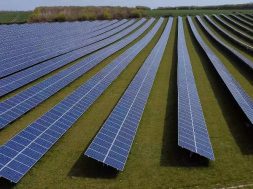
Field Proven solar PV materials are also proven to be cost effective!
Quality is a necessity, not an option for lifetime performance and returns for your PV systems
- By Rahul Khatri, Technical Manager, DuPont Photovoltaic Solutions
MNRE has recently issued a new order seeking to improve the quality of components in the solar sector [Solar Photovoltaics, Systems, Devices, and Components Goods (Requirements for Compulsory Registration) Order, 2017]. This step clearly indicates that the quality of solar panels being used in Indian projects is sub-standard. While both cost and quality should be optimally balanced to maximize levelized cost of electricity (LCOE), low awareness among PV stakeholders about importance of quality materials and the perception that “quality comes at a price” have shifted the balance towards cost. This assumption is preventing PV stakeholders from taking measures to incorporate quality in their PV module selection process and thereby increasing investment risks.
Solar panel’s bill of materials (BoM) is one of the key quality aspects that has witnessed rapid changes in the past few years. Changes in BoM include thinner front glass, thinner cells, new (but unproven) backsheet materials such as PVDF, PET, Fluoro-coating, and Polyamide (PA), thinner frames, etc. that are subjecting PV panels to a higher risk of failure in the service environment. In the extensive PV field studies conducted by DuPont, that include inspection of 450 MW global installations, 11% modules demonstrated cell related defects (snail trails / cracks, hot spots) and 7.5% modules demonstrated backsheet defects (cracking, yellowing, delaminating, abrading). Most of these defects were observed in less than 5-year old solar installations with new backsheet materials which highlights the negative impact of compromises being made on the materials side.
Coming to backsheets, Tedlar® PVF film-based backsheets’ proven field performance for over 35 years (very low module power loss) has set quality benchmarks which no other backsheet has been able to achieve. In DuPont field studies, 7% modules (average age 2.3 years) with PVDF based backsheets and 8.6 % modules (average age 3 years) with PET based backsheets showed defects in backsheet compared to only 0.01% backsheet defects seen in modules (average age 5.4 years) with Tedlar® PVF film-based backsheets. Some of the field observations in backsheet are shown in figure 1.

Figure 1: A. Cracking of outer PET film in 4-year old installation; B. Cracking and delamination of outer PVDF film in 5-year old installation; C. Cracking of outer Polyamide film in 3-year old installation; D. No degradation of Tedlar® PVF film-based backsheet in 27-year old installation
Let’s also understand the cost differential between Tedlar® PVF film-based backsheets and other backsheets. Tedlar® PVF film-based backsheets usually come in two structures – TPT™ (Tedlar®/Polyester/Tedlar®) and TPX (Tedlar®/Polyester/tie-layer), where tie layer can be an adhesive based copolymer such as EVA or Polyethylene or Polyolefin, fluoro-coating, etc. TPT™ backsheets (double side fluoropolymer) provide excellent protection in extreme climates where very high UV radiations, humidity, and temperatures are observed and is field proven for 25+ years in all climatic conditions. For moderate climates, TPX backsheets provide excellent protection and lasting value by delivering consistent performance over solar panel’s lifetime.
Comparing double side fluoropolymer based backsheets, for a 72-cell module with a nameplate rating of 330 Wp, TPT™ is marginally higher priced by 0.3 – 0.4 of a US cent per watt than double sided PVDF based backsheets. For single side Tedlar® (TPX) and PVDF based backsheets, this cost difference stands at 0.4 – 0.5 US cent per watt. Considering the case of a typical PV plant in India, the payback time for TPT™ backsheet is just 14 – 17 days, and that for TPX is 20 – 26 days. In other words, the higher price of TPT™ / TPX backsheet can be recovered if the system produces power for an additional 14 – 17 days / 20 – 26 days. The cost difference and payback time are summarized in table 1.
Table 1: Backsheet Cost Difference and Payback Time
| TPT™ vs Double Side PVDF | TPX vs Single Side PVDF | |||
| Cost Difference ($/Wp) | 0.004 – 0.005 | 0.004 – 0.005 | ||
| Payback Time (No. of days of outdoor exposure to recover cost differential) | 14 – 17 | 20 – 26 |
Assumptions
- Average Solar Radiation: 5 kWh/m²/day
- Feed in Tariff (FIT): INR 3.3/kWh
- Performance Ratio (PR): 80%
The above analysis clearly demonstrates that Tedlar® PVF film-based backsheets provide an optimal balance between quality and price and prove to be an extremely cost-effective solution to enhance module protection and mitigate performance risks over the long term, and therefore contradict the perception of quality coming at a price. A developer might have to initially pay small premium for Tedlar® PVF film-based backsheets, but the benefits of reliable performance and reduced failure risks on investment greatly outweigh the incremental cost. Judging the field performance results of different backsheet materials available in the market, it’s a wise decision for developers to specify use of Tedlar® PVF film-based based backsheets in the solar panels for their projects to mitigate backsheet failure risks.
# # #















